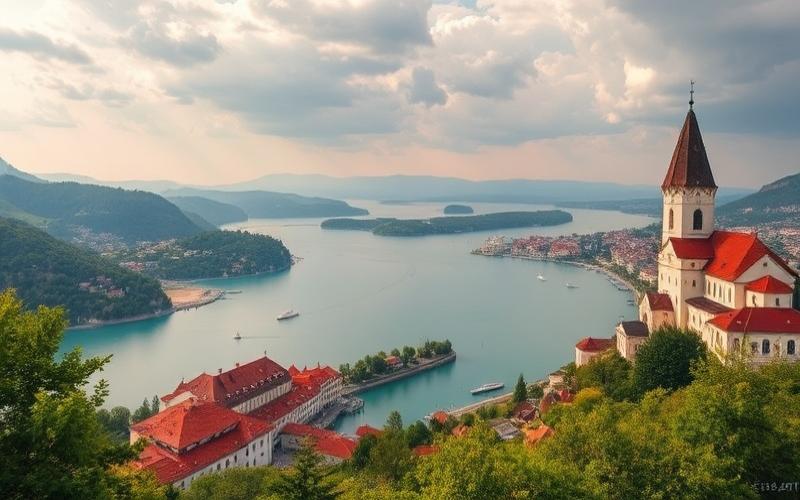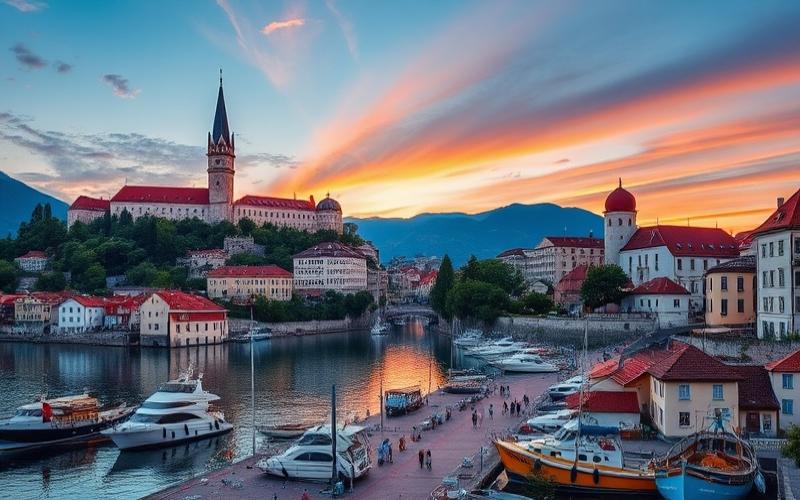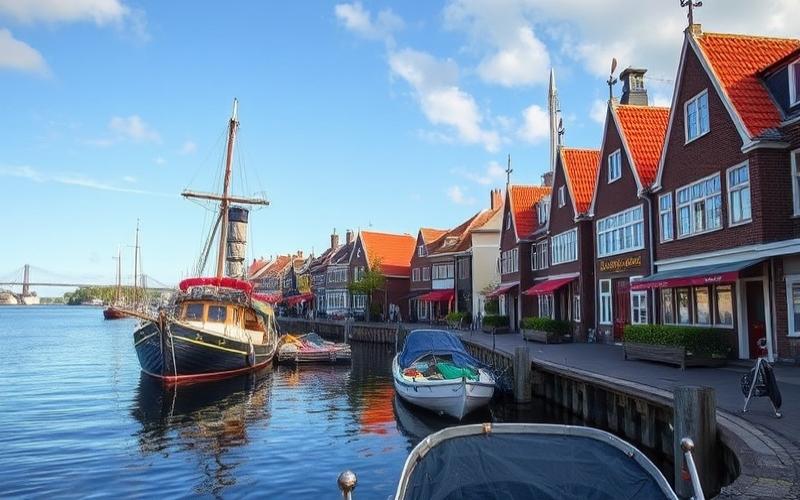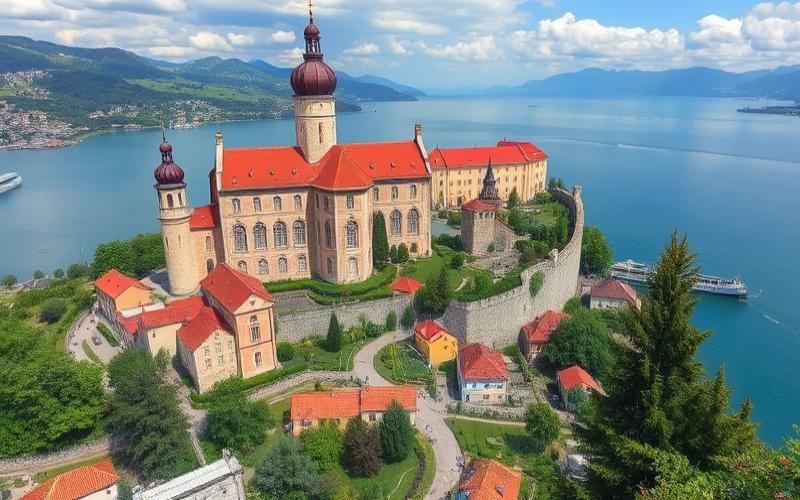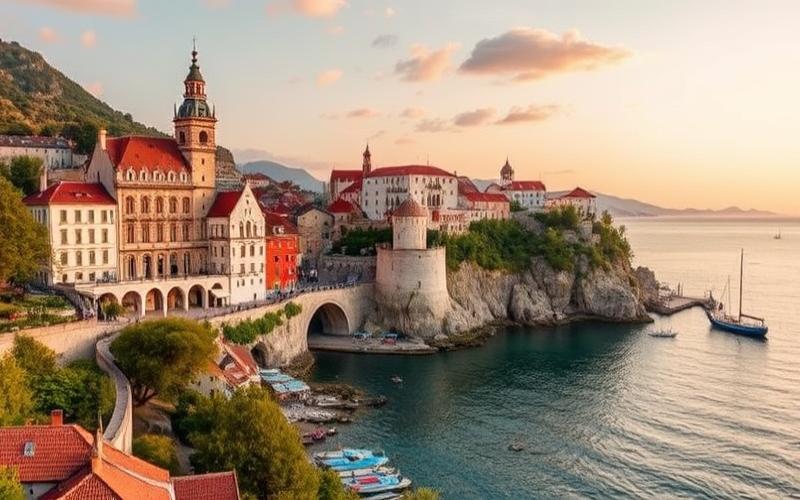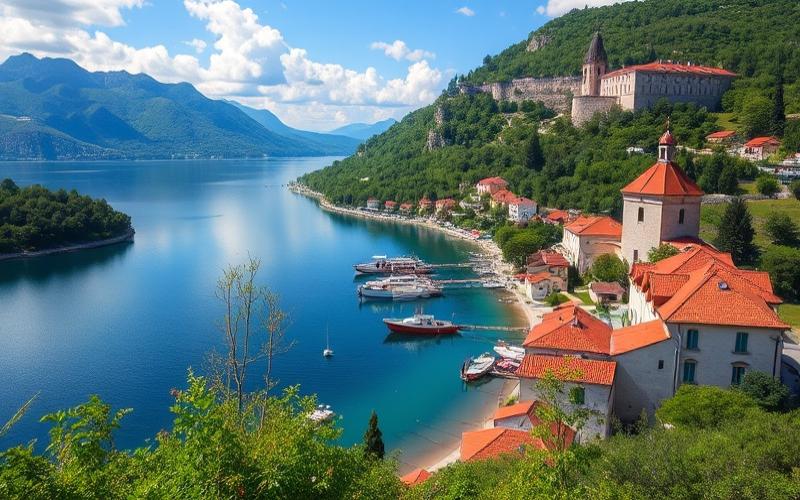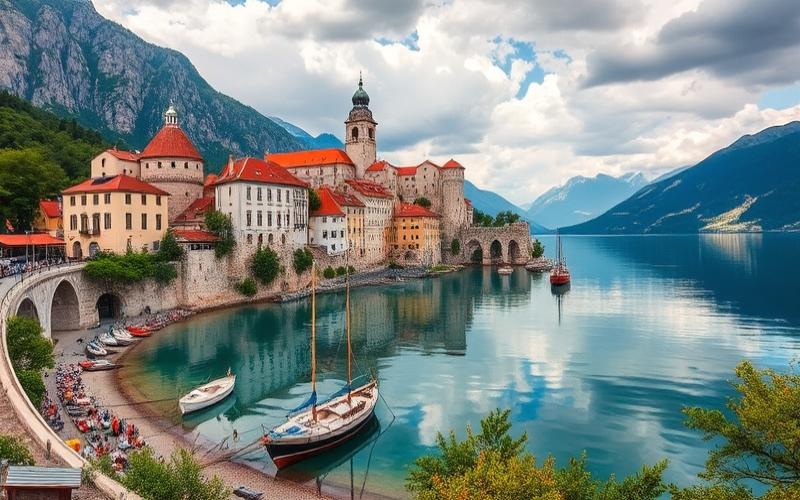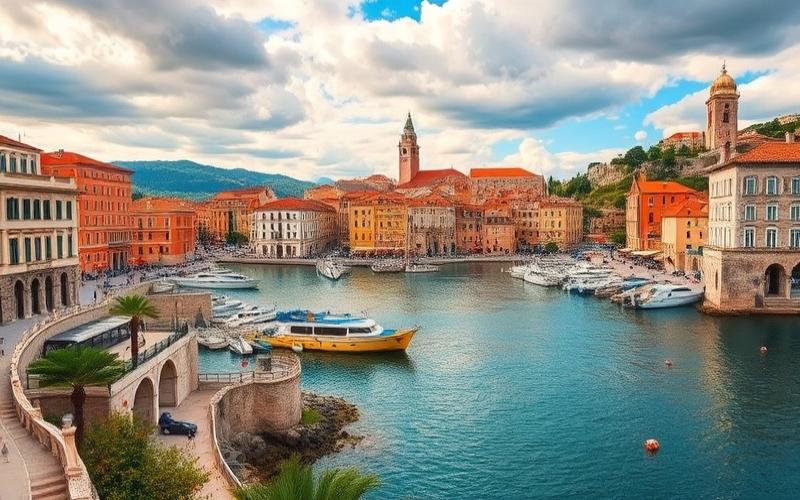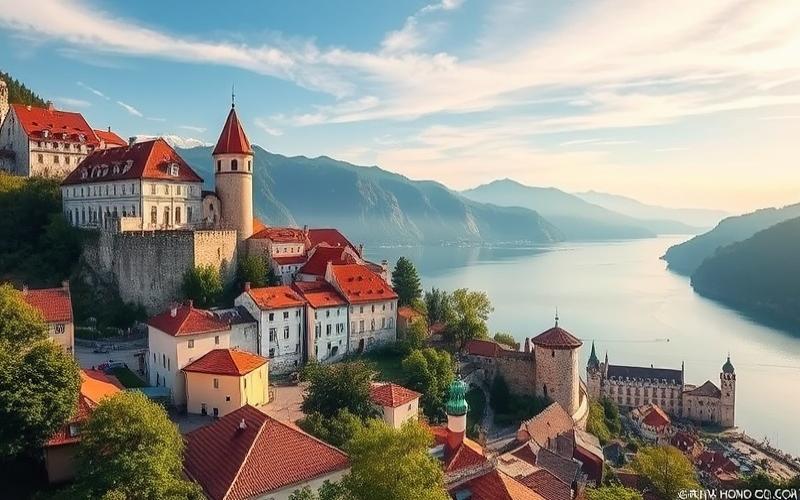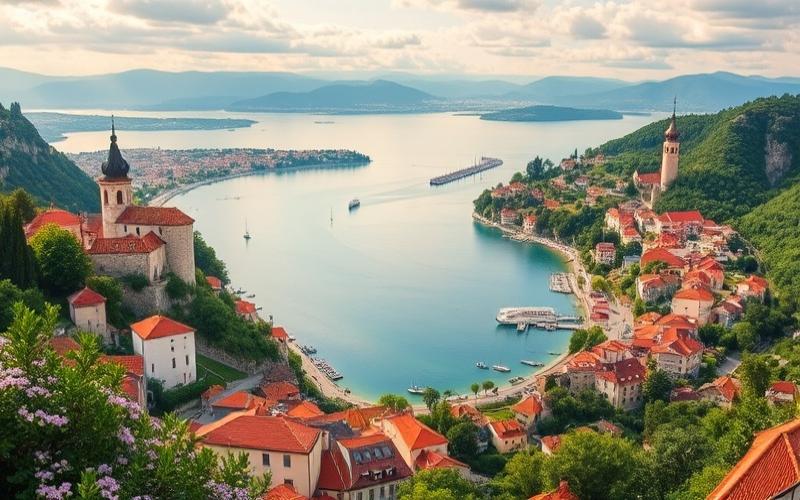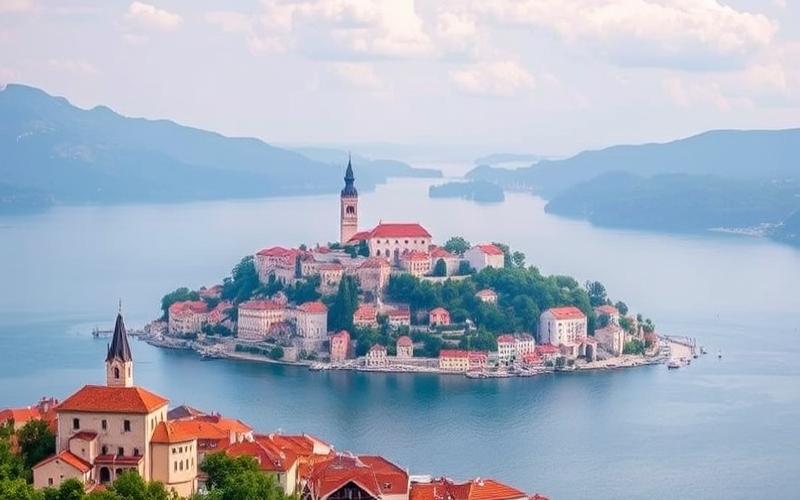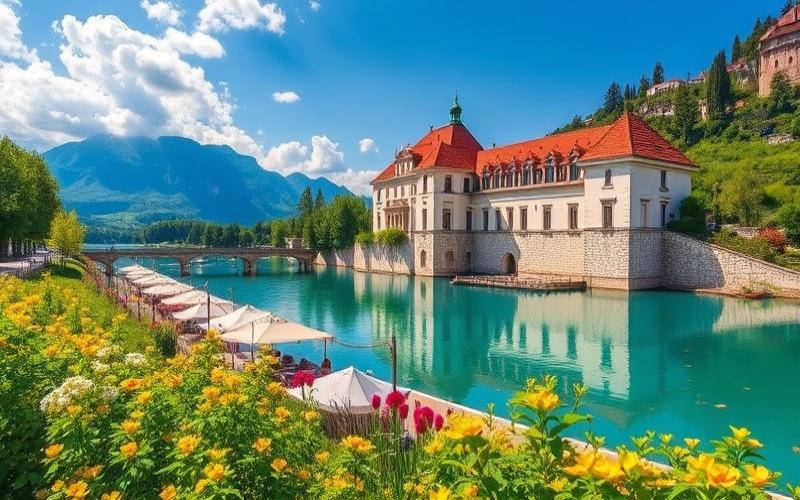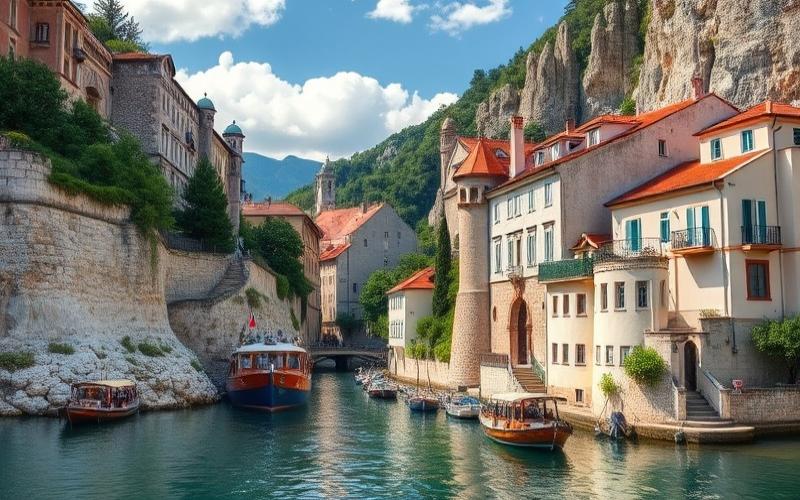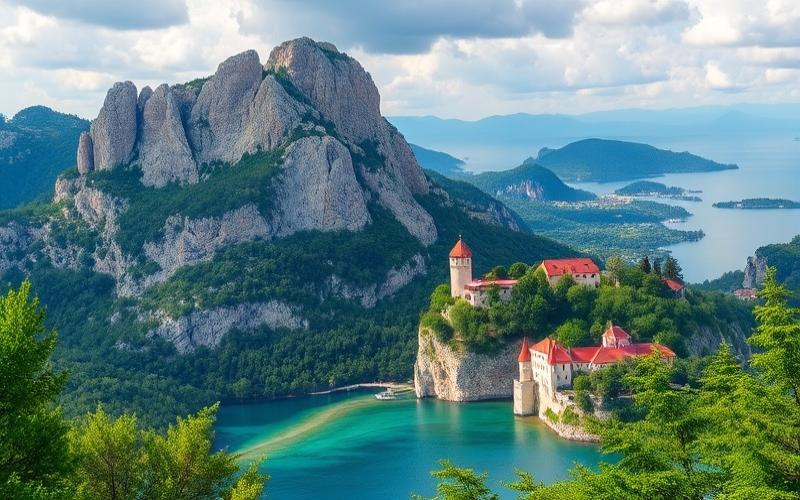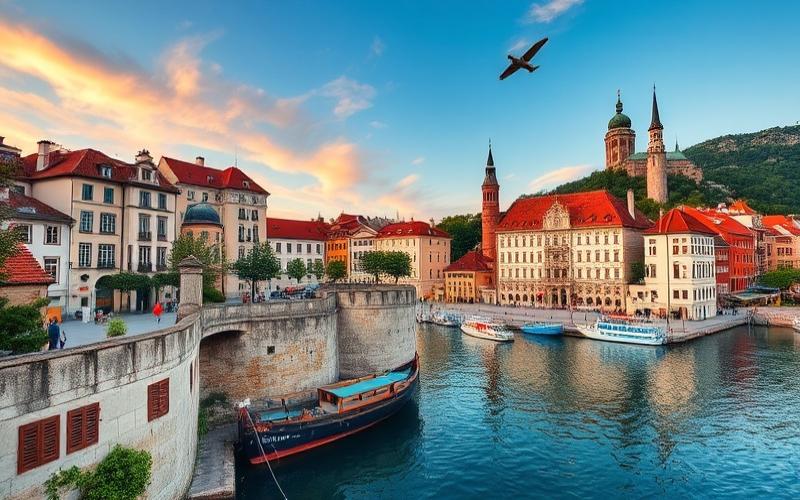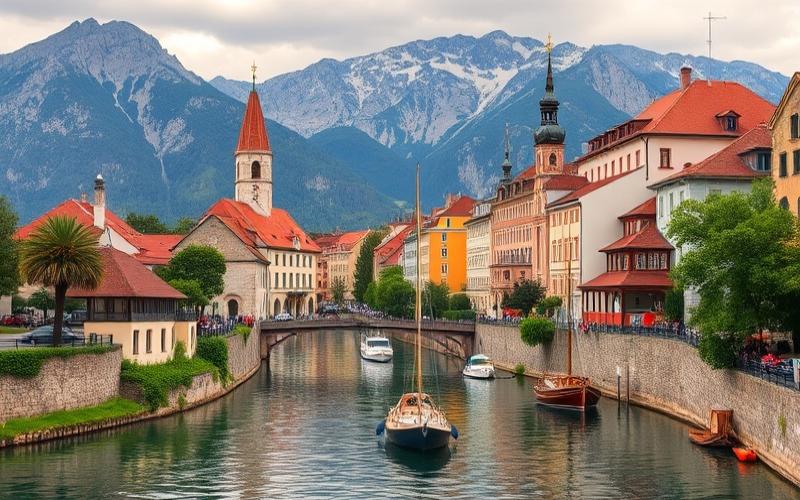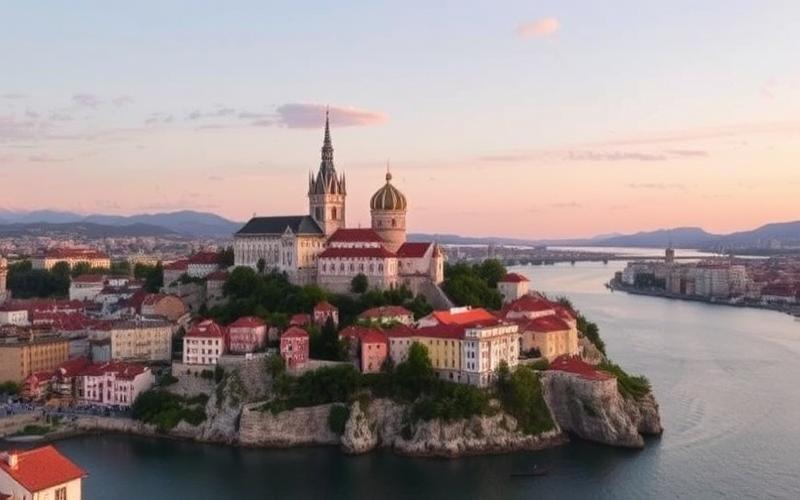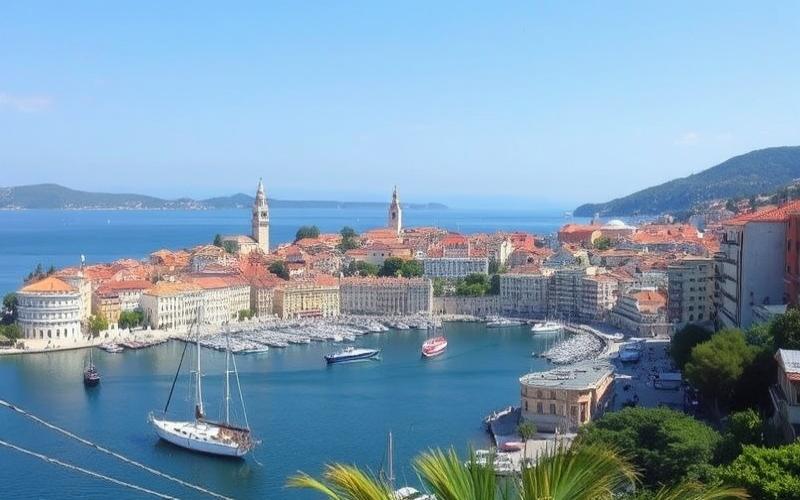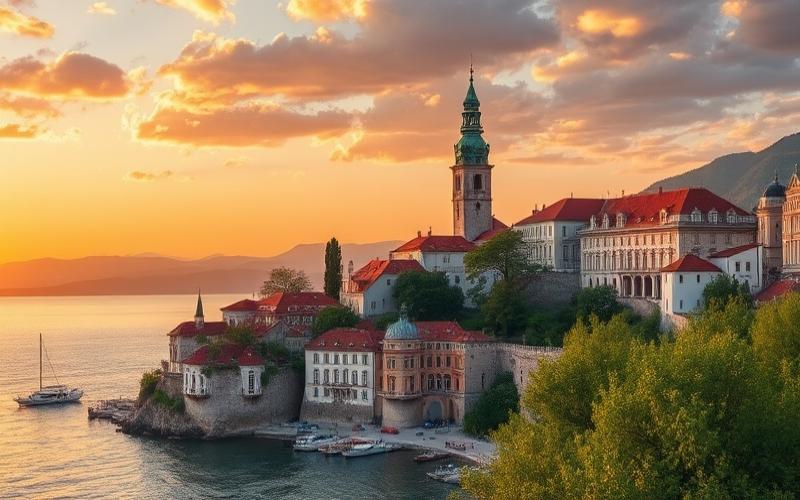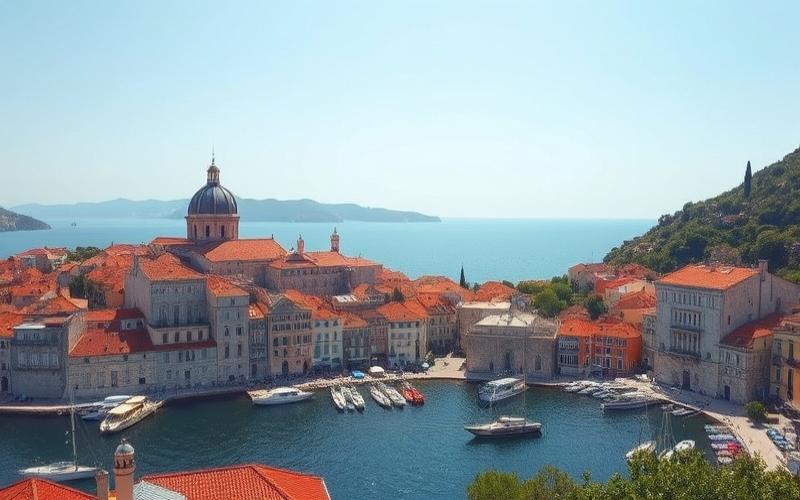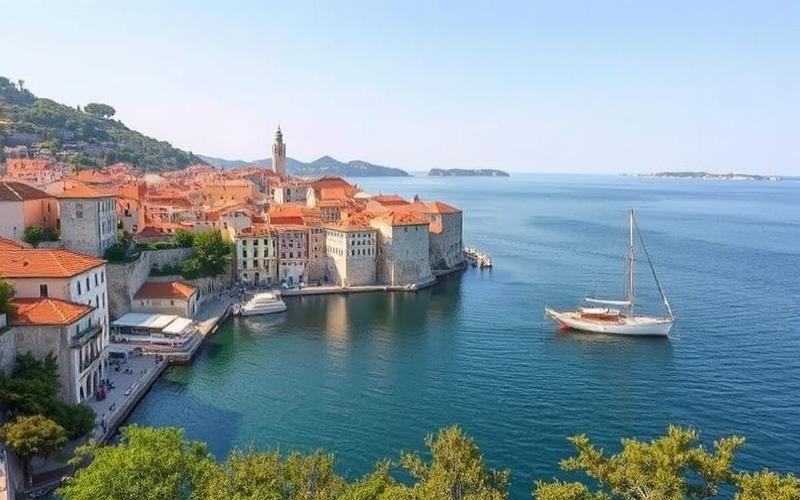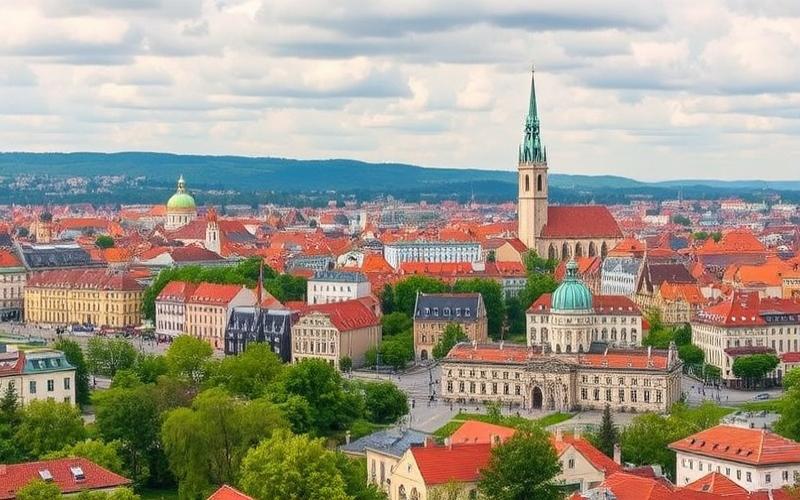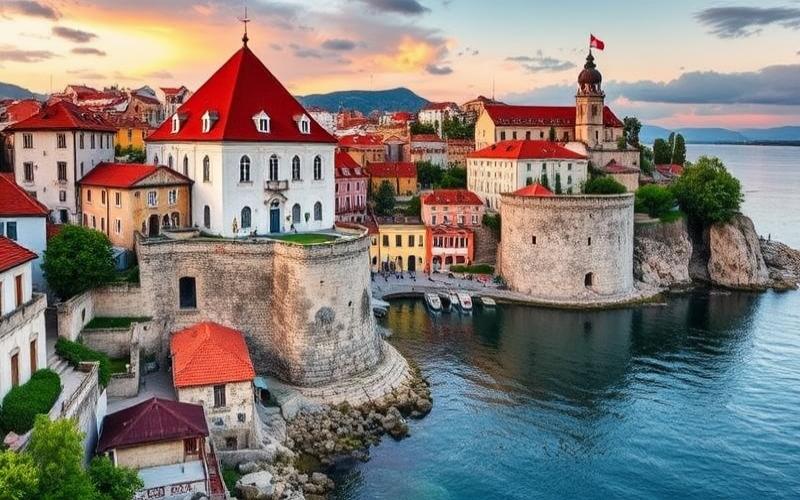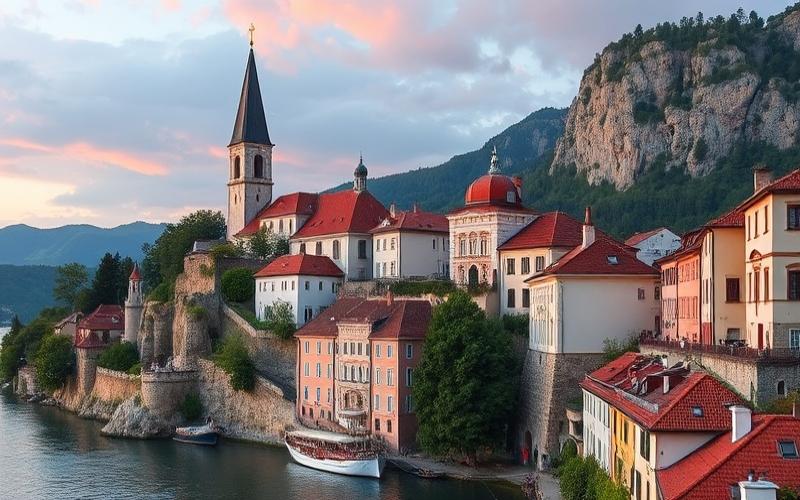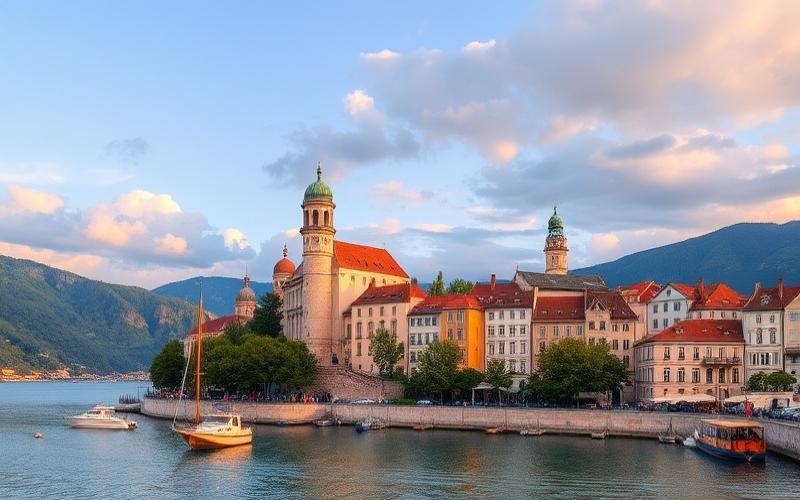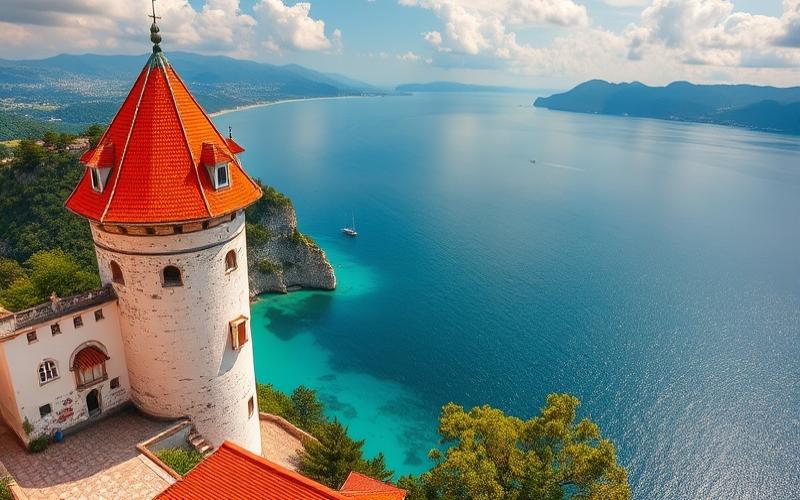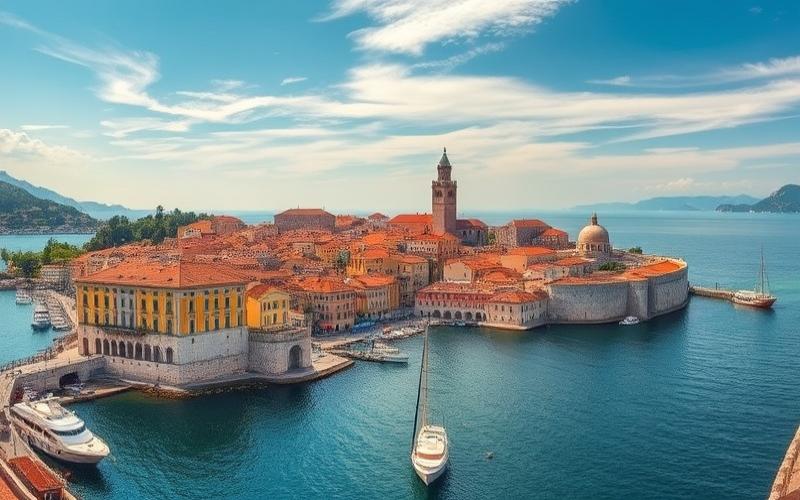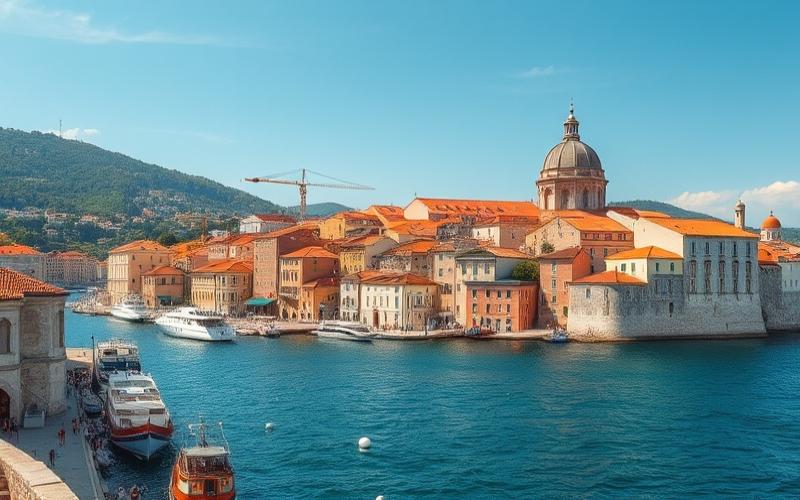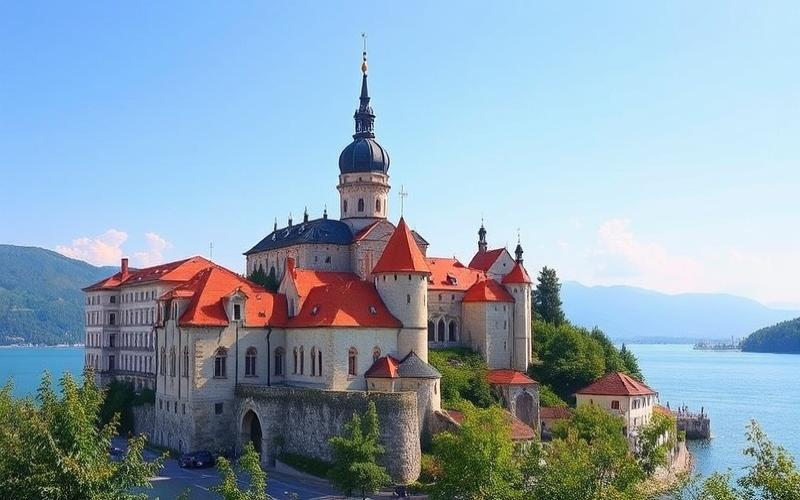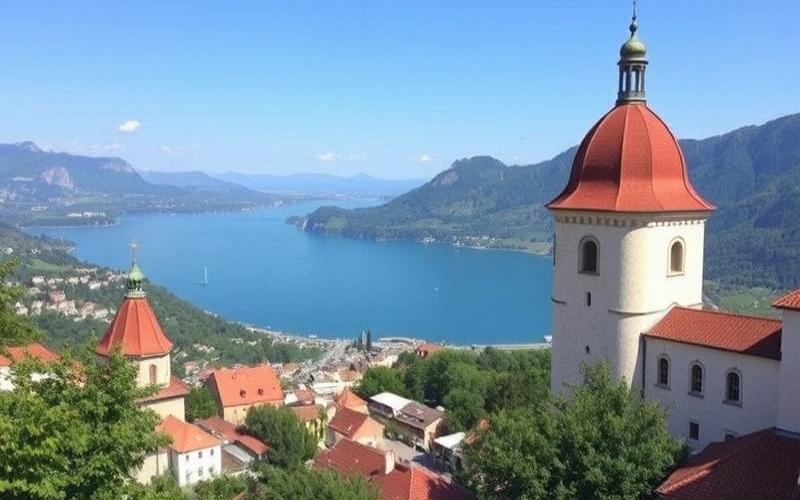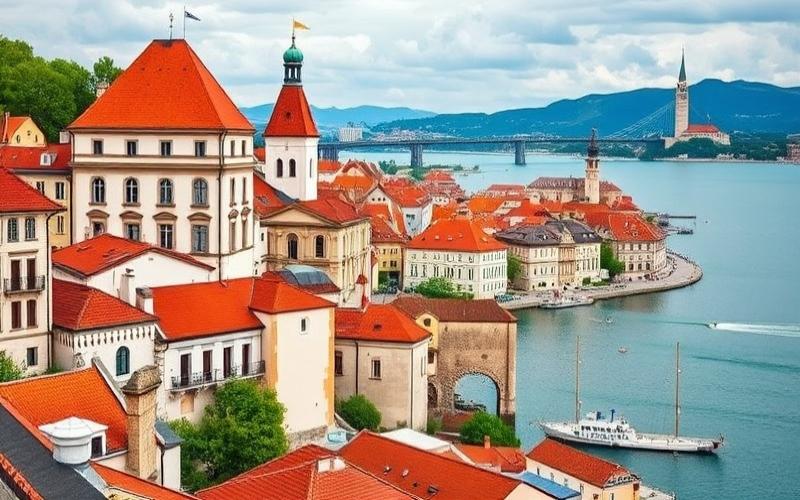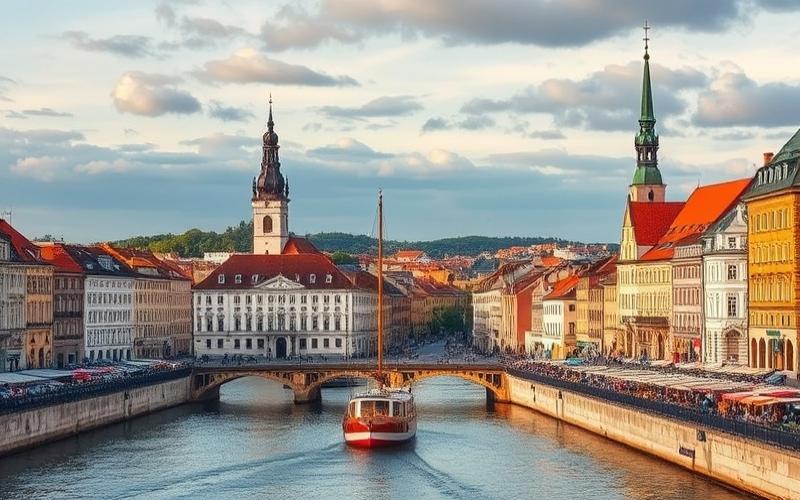
 Published on and written by Cyril Jarnias
Published on and written by Cyril Jarnias
In a context where real estate prices continue to climb in Croatia, micro-apartments are emerging as an ingenious solution for tight budgets. With optimized living spaces that can measure less than 25 square meters, these homes offer not only an affordable alternative but also a simplified lifestyle suited to the needs of modern urban dwellers.
Major Croatian cities like Zagreb or Split are seeing more and more of these residences emerge, meeting the growing demand from a young and mobile population seeking comfort without breaking the bank.
This article explores how these residential innovations are redefining not only the concept of urban housing but also the consumption habits of new generations.
The Growing Trend of Micro-Apartments in Croatia
The growth of micro-apartments in Croatia is explained by several interdependent factors:
- Rapid urbanization: Major cities like Zagreb, Split, and Rijeka are experiencing accelerated densification, increasing the demand for compact and affordable housing.
- Tourist influx: The tourism boom is stimulating the creation of small rental units, particularly in historic centers like Zadar or Tribunj, suited for short stays while maximizing yield per square meter.
- Economic constraints: Rising real estate costs are pushing young professionals, students, and seasonal workers toward these more accessible solutions. The national plan aims for 9,000 new affordable apartments by 2030, with a significant portion dedicated to non-profit rentals.
Typical characteristics of micro-apartments include:
- A surface area generally under 30 m², sometimes reduced to 15–20 m² in central or tourist areas
- Innovative interior design aimed at maximum space optimization:
- Multifunctional furniture (retractable sofa beds, folding tables)
- Built-in storage under stairs or in walls
- Equipped compact kitchen
- Strategic use of natural and artificial light to visually enlarge the space
| Characteristic | Description |
|---|---|
| Surface Area | 15-30 m² |
| Layout | Multifunctional furniture, optimized storage |
| Location | Urban centers/tourist areas |
“The proliferation of micro-apartments offers an immediate response to current economic challenges while promoting greater residential flexibility. However, it also raises the risk of social homogenization and poses the question of sustainable access to traditional family housing.”
Furthermore:
- This evolution positively contributes to urban attractiveness by facilitating the quick settlement of new residents.
- It can generate an inflationary effect on the local tourist rental market if not regulated by public policies aimed at social balance.
The growing phenomenon of micro-apartments is thus durably redefining the Croatian residential landscape between increased economic attractiveness and emerging social challenges.
Good to Know:
In Croatia, the micro-apartment phenomenon is experiencing notable growth, mainly due to rapid urbanization and the tourist influx, particularly marked in Zagreb and the Dalmatian coast. Driven by economic constraints, young professionals and students are seeking affordable housing solutions, favoring these compact spaces. Typically 20 to 30 m², these apartments are distinguished by innovative design and clever layouts like retractable beds and multifunctional furniture, optimizing every square centimeter. Experts note that while this trend helps meet housing demand, it also poses socio-economic challenges, particularly in terms of community integration and quality of life.
The Benefits of Investing in a Studio in Croatia
Financial Benefits of Micro-Apartments in Croatia
- Attractive acquisition cost: Micro-apartments in Croatia have a significantly lower purchase price than similar properties in other Western European countries. For example, it’s possible to find studios starting at €60 per night during high season, reflecting a lower initial acquisition cost and increased accessibility for individual investors.
- Potential for seasonal rental profitability: The continuous increase in tourism in Croatia generates growing demand for small spaces, particularly in coastal and tourist cities like Dubrovnik, Split, or Zadar. This trend allows for high occupancy rates, especially during the summer period, and thus interesting profitability. A well-located micro-apartment can be rented between €60 and €120 per night in summer, with occupancy rates frequently exceeding 80% in high season.
- Usage flexibility:
- Personal use: The studio can serve as a pied-à-terre for personal or family stays, offering an easily accessible second home.
- Short-term rental: Thanks to platforms like Airbnb, it’s easy to rent out the property for short stays while retaining the possibility of personal use during certain times of the year.
- Simplified management: Small spaces require less daily management, facilitating tenant turnover and limiting vacancy periods.
Comparison Table: Micro-Apartment vs. Larger Housing
| Criterion | Micro-Apartment (Studio) | Two/Three-Bedroom Apartment or Larger |
|---|---|---|
| Purchase Price | Low | High |
| Maintenance Fees | Very Low | Higher |
| Seasonal Rental Potential | High | Good, but often less flexible |
| Summer Occupancy Rate | Up to 80-90% | 60-75% depending on region |
| Usage Flexibility | Maximum | Less suited for short-term rental |
| Mobility | Easy to sell/rent | More difficult to sell/rent |
| Maintenance Simplicity | Quick cleaning, few repairs | More complex maintenance |
Gains in Terms of Mobility and Maintenance Simplicity
- Increased mobility: Investing in a studio allows for great flexibility: the property sells easily and can quickly adapt to evolving needs or market changes.
- Facilitated maintenance: The small surface area of a micro-apartment reduces cleaning and maintenance costs, decreasing time and financial burdens for the owner.
In summary: Micro-apartments in Croatia offer access to property at a lower cost, excellent profitability potential thanks to strong tourist demand, great usage flexibility, and concrete advantages in terms of mobility and maintenance simplicity compared to larger homes.
Good to Know:
Investing in a studio in Croatia presents various financial benefits, including an acquisition cost often under €100,000, which is competitive compared to other European regions. Demand for these micro-apartments is rising due to the tourism boom, favoring considerable seasonal rental profitability potential, with Airbnb rents sometimes reaching €50-70 per night during high season. This usage flexibility appeals for both secondary residences and short-term rentals. Moreover, the simplified management and low maintenance fees associated with these small homes make them an ideal option for investors seeking to minimize constraints while benefiting from good mobility.
Microliving: An Economic Solution for Tight Budgets
Microliving represents a major economic solution for low-income households in Croatia, allowing them to significantly reduce monthly expenses and more easily access urban housing.
- Reduction of fixed costs:
- Micro-apartments require less energy expenditure (heating, air conditioning, electricity) due to their small size.
- Water consumption and routine maintenance are also lower.
- Condominium or building fees are generally proportional to the home’s size.
- Less furniture and reduced furnishing costs:
- The limited space imposes minimalist furnishing, greatly reducing the initial budget dedicated to furniture.
- Many micro-homes are offered already furnished or equipped.
- Simplified maintenance:
- Less space means fewer surfaces to maintain, thus reduced costs for cleaning or potential repairs.
| Type of Expense | Standard Apartment (Zagreb average) | Micro-Apartment (estimate) |
|---|---|---|
| Monthly Rent | ~€600–800 | ~€350–500 |
| Energy+Water Charges | ~€120 | ~€50–70 |
| New Furniture | >€2,000 | <€1,000 |
“Since I moved into my compact studio downtown, my bills have dropped by almost half. I was able to save enough to fund my professional training”
— Testimony collected from a young Croatian worker
“Living in a reduced space has not only allowed me to pay less each month but also to learn to consume differently. I no longer buy anything I don’t really need”
— Retired resident
- Public support and subsidies:
- Some Croatian municipalities are beginning to support access to affordable housing through direct aid to young professionals or students opting for these compact formats.
- Pilot programs are currently testing the creation of shared habitats, partially subsidized by European funds dedicated to urban renewal.
- Occasional tax exemptions may be granted for first-time property purchases if it concerns a compact primary residence for first-time buyers.
Policies are evolving rapidly so that this type of housing can durably respond to local social challenges while guaranteeing true financial accessibility.
Good to Know:
Micro-apartments in Croatia offer a notable economic solution for tight budgets, allowing for a significant reduction in monthly expenses. Indeed, their modest size implies lower costs for heating, electricity, and maintenance, and requires less furniture, which helps decrease overall expenses. Compared to the average cost of living of about €800 per month for a traditional apartment, the rent for a micro-apartment can start around €300-400, making this option particularly attractive for low-income households. A Zagreb resident testifies that their electricity bill was cut in half since moving into such a space. Moreover, some government programs and local subsidies facilitate access to these homes, particularly through financial aid aimed at youth and low-income workers, thus making microliving a viable and sustainable option for modest budgets.
Optimizing the Yield of Small Spaces in Croatia
Optimizing the yield of small spaces in Croatia relies on a combination of interior layout strategies, design innovation, and adaptation to the local urban environment.
Strategies to Maximize Space in Micro-Apartments:
- Multifunctional and modular furniture
- Retractable beds (folded into the wall or ceiling)
- Foldable or extendable tables also serving as a desk or work surface
- Built-in storage under beds, convertible sofas with storage
- Compact kitchens hidden behind sliding or folding doors
- Innovative storage solutions
- Maximum use of ceiling height with shelves, tall cabinets, and mezzanines
- Utilization of corners for small bookshelves, compact desks, or custom storage
- Redesigned closets to accommodate compact appliances and daily accessories
- Thoughtful color choices
| Strategy | Desired Effect |
|---|---|
| Light colors | Visually enlarge the space |
| Neutral/pastel tones | Enhance brightness and sense of openness |
| Transparent furniture/mirrors | Reinforce perception of an airy space |
Light colors such as off-white, beige, or pearl gray better reflect the natural light available in densely built Croatian cities. This allows not only a visual effect but also better daily comfort.
Inspiring Local Examples:
- In Zagreb, several recent renovations have transformed traditional studios (30–35 m²) into attractive homes thanks to:
- Open plans with merged kitchen/living room,
- Addition of sliding doors between entry/bedroom allowing more accessible storage from the hall,
- Creation of multifunctional spaces: dining area that becomes an office as needed.
- On the Dalmatian coast (Split, Rijeka), some tourist micro-apartments exploit every nook:
- Raised bed platforms freeing floor space,
- Retractable solutions inspired by local nautical design.
Importance of Architectural Design Adapted to Croatian Urban Context:
The Croatian urban fabric is characterized by high density in its historic city centers and increased demand for affordable yet quality housing.
- Adapt each project to heritage constraints (old buildings often without elevators or large openings)
- Prioritize interior modularity and evolutivity to meet changing needs (seasonal rental versus long-term)
- Integrate sustainable local materials promoting thermal insulation/natural light
Impact on Real Estate Profitability:
Optimizing these small spaces directly increases their rental/market value:
- Well-thought-out spaces rent faster — often at a premium price per square meter.
- The target clientele includes mobile young professionals as well as tourists seeking modern comfort even in limited space.
In the Croatian context where the real estate market faces pressure between strong tourist demand and permanent residential needs — particularly in Zagreb and major coastal cities — investing in ingenious layout ensures not only better annual occupancy but also reduces vacancy periods.
In summary: Intelligent layout combined with judicious choice of materials/colors allows Croatian micro-homes to combine local aesthetics, optimal functionality…and sustainable profitability.
Good to Know:
In Croatia, optimizing micro-apartments involves innovative layout strategies such as integrating multifunctional furniture, like a sofa-bed or extendable table, which allow transforming spaces without sacrificing comfort. The use of ingenious storage solutions, like modular shelves or drawers under stairs, maintains order while saving space. Using light colors for walls and furniture helps create an illusion of spaciousness and brightness, enhancing the perception of space. Local successes, such as projects by architects like 3LHD or NFO, illustrate how modern design and local materials can harmoniously adapt to the Croatian urban environment. By optimizing these micro-spaces, better profitability is ensured in the real estate market, where demand for affordable housing is strong, while respecting the country’s cultural and aesthetic particularities.
Disclaimer: The information provided on this website is for informational purposes only and does not constitute financial, legal, or professional advice. We encourage you to consult qualified experts before making any investment, real estate, or expatriation decisions. Although we strive to maintain up-to-date and accurate information, we do not guarantee the completeness, accuracy, or timeliness of the proposed content. As investment and expatriation involve risks, we disclaim any liability for potential losses or damages arising from the use of this site. Your use of this site confirms your acceptance of these terms and your understanding of the associated risks.

